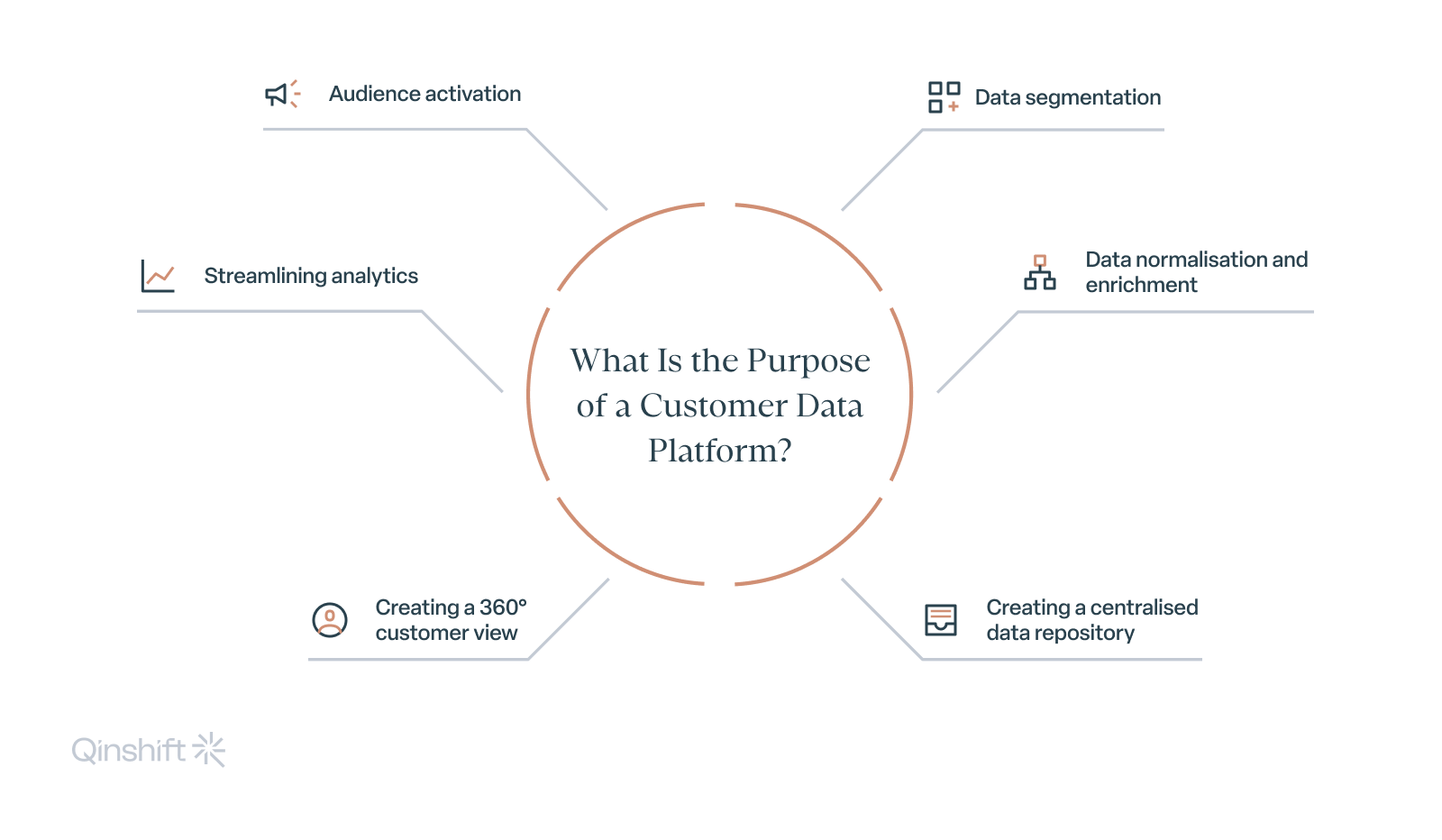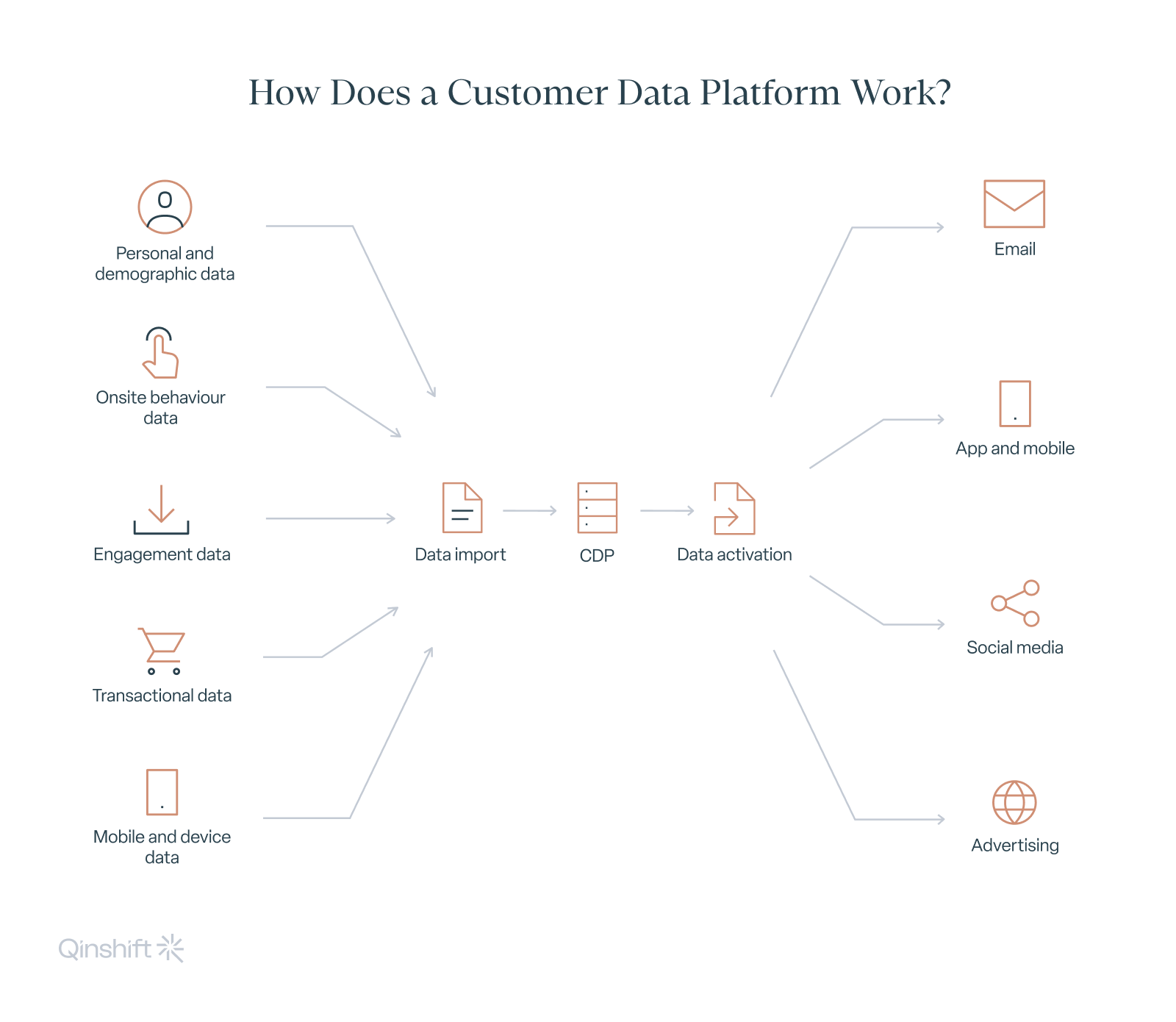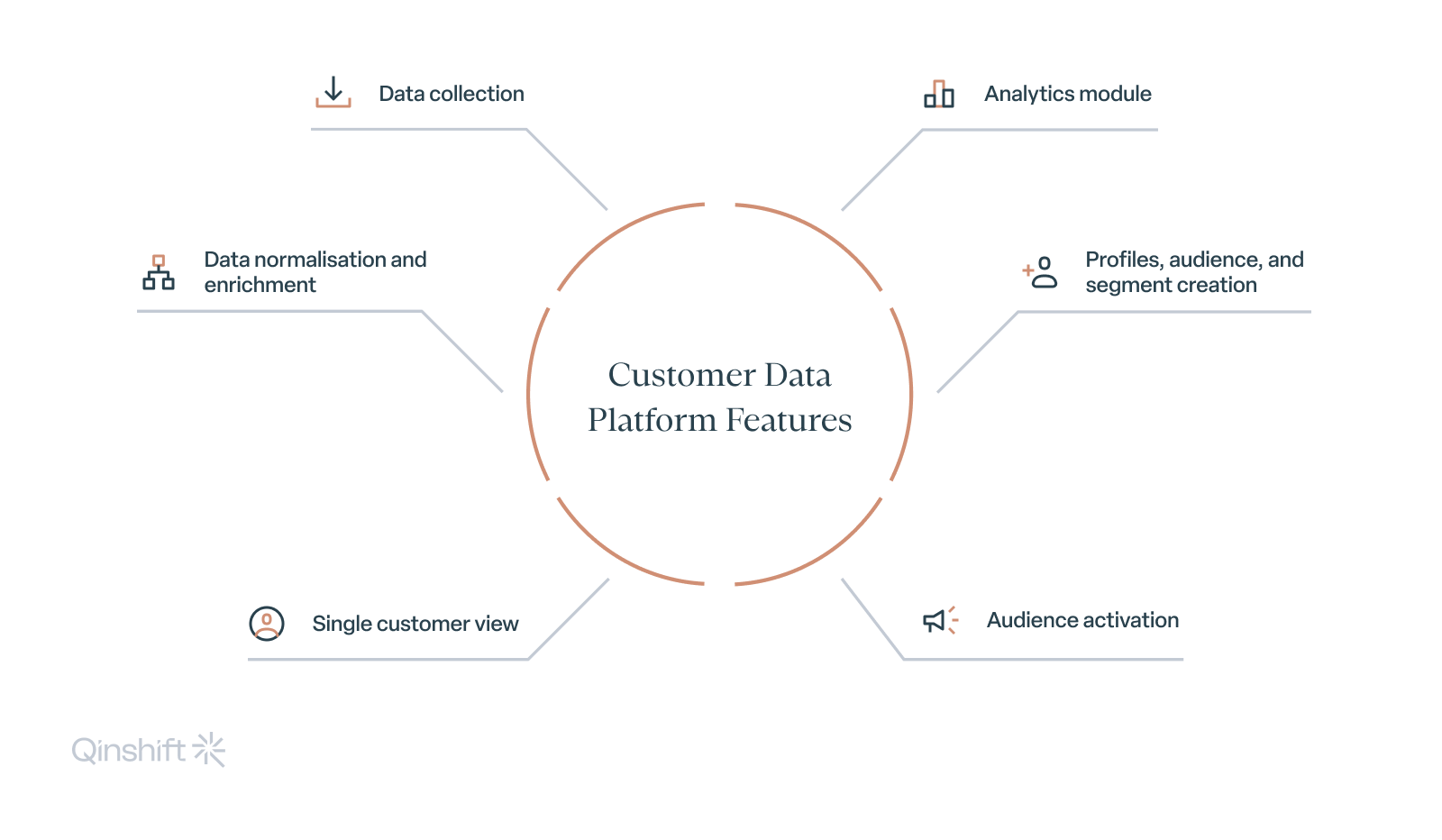What Is a Customer Data Platform (CDP) and How Does It Work?

Having access to data is as important as knowing how to work with it when running a successful business.
A customer data platform (CDP) is a solution that enables you to build compelling marketing and advertising strategies.
In this article, you’ll learn:
- what a customer data platform is and how it works,
- what features CDPs use to deliver a 360° view of data,
- how you can use a CDP to grow your business.
Key Points
- The customer data platform is a centralised data repository that facilitates working with data analysis and streamlines data activation.
- The main features of a CDP include data collection, normalisation, and enrichment; building detailed analytical reports; combining data to create a single customer view; and audience activation.
- Using CDPs enables planning strategic movements that increase the probability of boosting revenue.
What Is a Customer Data Platform (CDP)?
A customer data platform (CDP) is a piece of software that gathers information from several sources to provide a single customer view (SCV) for advertising, marketing, and customer service purposes.
CDPs primarily collect first-party data and serve three key purposes:
1. Collection and unification of first-party data
Various marketing systems like email, analytics, e-commerce, or social platforms often work separately, creating data silos. This fragmented setup makes it difficult to run analyses effectively. A CDP’s main goal is to connect all marketing tools seamlessly, i.e. unifying first-party data and creating single customer views (SCVs).
2. Customer data management
CDPs help oversee the data flow between marketing systems and user consent. The technology aligns with today’s strict data privacy standards, such as GDPR.
3. Customer data activation
SCV profiles created in CDPs enable building audience segments that advertising specialists can easily use across different AdTech platforms, boosting the effectiveness of advertising efforts.
In advertising, CDPs lay the groundwork for data activation. This may come in different forms:
- Content personalisation
- Segmentation and data analysis
- Campaign automation
- A/B testing
- Customer journey management
What Data Is Collected in a Customer Data Platform?
A CDP’s aggregated data may include information about the historical behaviour of a user.
The data it gathers should focus on enhancing advertising and marketing processes:
- Demographic data
- Onsite behavioural data and browsing history
- Engagement data (clicks, downloads, etc.)
- Transactional data
- Mobile and device data
- Product use data
- Partner and third-party information (optional)
How Does a Customer Data Platform Collect Data?
A CDP collects data through various methods, including:
1. Integrations with AdTech and MarTech platforms
CDPs can connect with other advertising technology and marketing technology platforms via server-to-server connections or APIs.
2. Website tagging
By adding tags like JavaScript snippets or HTML pixels to an advertiser or publisher’s website, CDPs can collect data.
3. Data import
Marketers can import data to CDPs from different file formats, such as CSV, TSV, or Parquet.

How Does a Customer Data Platform Work?
A customer data platform gathers information from several sources, unifies it into a format that is easily understood by companies, and gives them the tools they need to use it strategically.
The image below illustrates how a customer data platform processes data and prepares for its activation:

What Are the Main Features of a Customer Data Platform?
CDPs help organise an effective business. The platforms have features that enable using data for the purposes of advertising, marketing, and customer service.

Data Collection
The data collection feature enables gathering data from diverse sources of information such as websites, mobile applications, and CRMs. In order to work, this function utilises APIs, event trackers (e.g. JavaScript tags), server-to-server integrations, and manual imports.
Data Normalisation and Enrichment
Data normalisation is a process of standardising data formats to create a unified structure. Data enrichment supplements building SCVs by adding relevant information. For example, it converts IP addresses to geolocations.
Analytics Reports
The analytics module offers insights into consumer behaviour and engagement using consolidated information from various sources.
Profiles, Audience, and Segment Creation
Creating new or updated profiles, audiences, and segments enables marketers to leverage data for advertising purposes, like the personalisation of ads.
Single Customer View (SCV)
This feature creates a unified view with detailed information about a customer and displays it on a single card. SCVs facilitate analysis of user interactions across different channels.
Audience Activation
The core feature of a CDP is data activation. Information gathered in the platform — segmented, deduplicated, and displayed in an SCV — allows marketers to take action on data they have and turn it into advertising campaigns, for instance.
5 Use Cases of a CDP for Digital Marketing and Programmatic Advertising
The aforementioned features create many opportunities for marketers to empower your business.
Here are the primary use cases of CDPs for programmatic advertising and digital marketing:
1. Boosting Revenue
Cross-selling and upselling can increase sales, since a CDP can collect transactional and qualitative data. For example, you may provide unique discount coupons or suggest goods that fit the hobbies and lifestyles of your clients.
2. Developing a Better Understanding of Your Brand and What It Offers
A client who already has a relationship with your brand may receive personalised materials. CDPs use behavioural (e.g. interest themes) and identification (e.g. name) data for customisation.
3. Tailoring Multichannel Communication
By using transactional data to segment your consumer base, you can approach them through the channels they actively use. You can provide them with timely messages, automate communication, and customise your offerings based on their needs.
4. Forecasting Customer Actions
With predictive data, you can continuously enhance the profiles of your consumers and optimise the marketing messages you show them (e.g. chance of purchase, churn, visit, email open).
5. Retargeting and Lookalike Modelling
A CDP fuels your advertising systems with the data it gathers. Because of this, you may use lookalike modelling to develop successful retargeting ads and draw in new clients that share the preferences of your existing customer base.
Why Should You Use or Build a CDP?
The greatest concern in marketing is wasting precious resources like time or money on inefficient activities. With a CDP, your chances of conducting successful campaigns increase.
Here are the main benefits of a customer data platform:
Enhance Your Efficiency
While no marketing efforts can guarantee strong results with minimal spending, you can improve your ad campaign success rates by targeting the right audience.
This means reaching out to a carefully selected group of prospective buyers and requires accurate segmentation. CDPs are extremely useful in achieving this, as they help create segments and audiences backed up by structured data.
Centralise Your Data Repository
Due to the dynamic nature of marketing and advertising, these industries especially need to have ready access to data. Using separate databases means wasting resources, but a CDP can solve that problem by centralising your data.
All you need to do is integrate your CDP with data silos, like a customer relationship management (CRM) system and mobile apps. The platform then unifies the data and displays it in an orderly manner.
Gain Better Insights
Combining various sources of customer data into one centralised platform provides you with more accurate and actionable insights. This allows you to make quicker business decisions driven by data.

